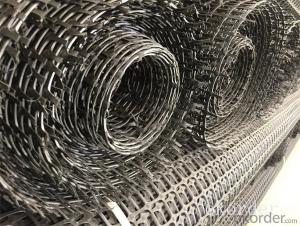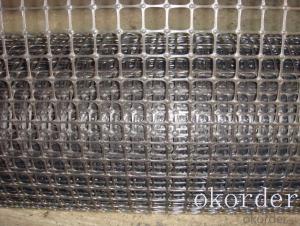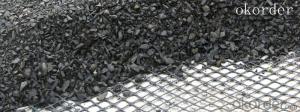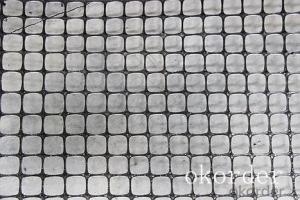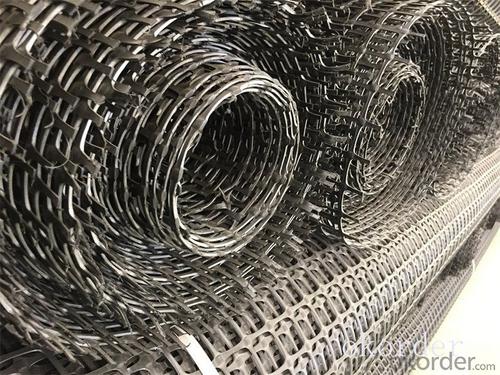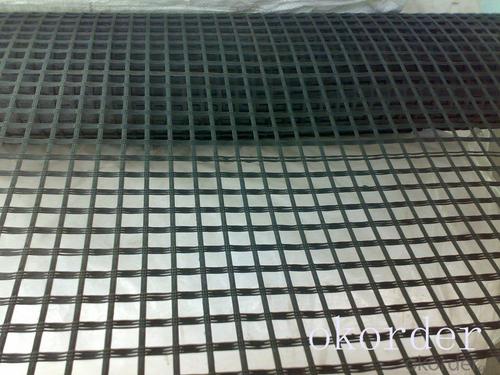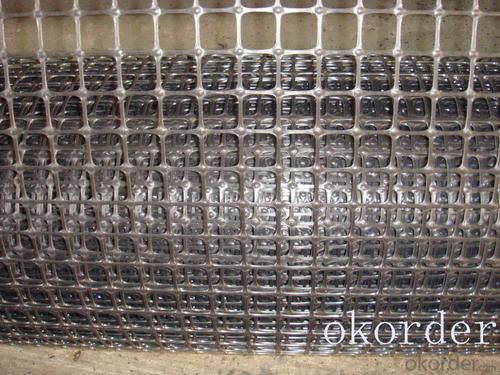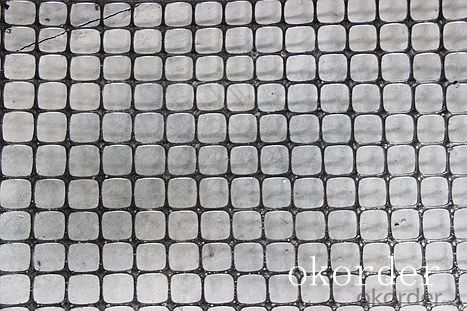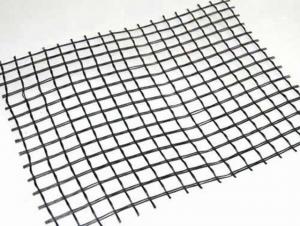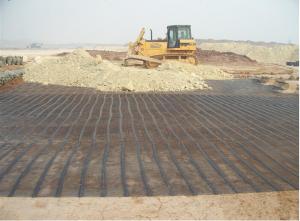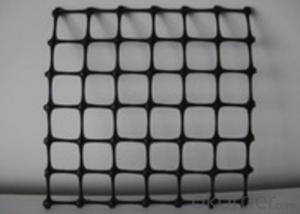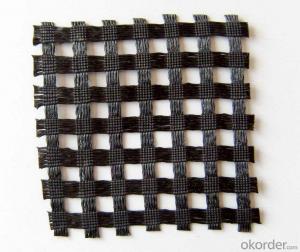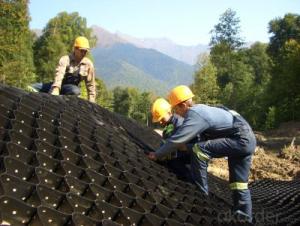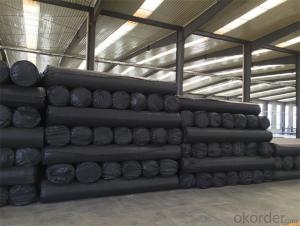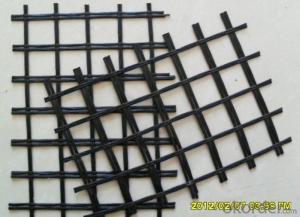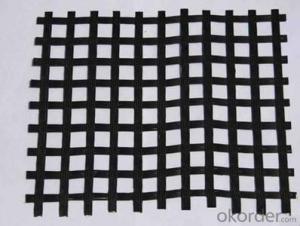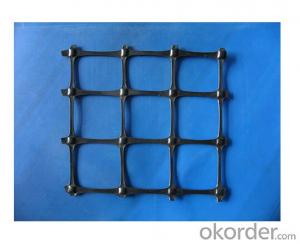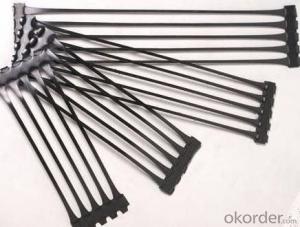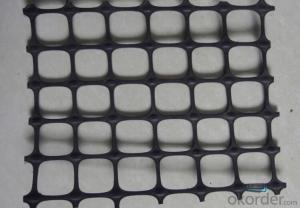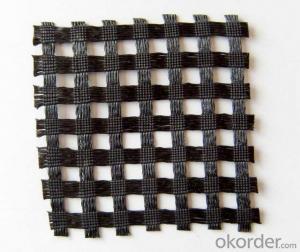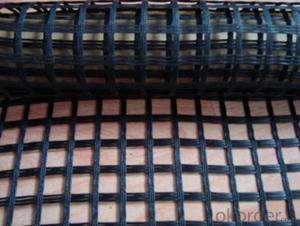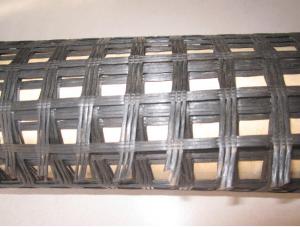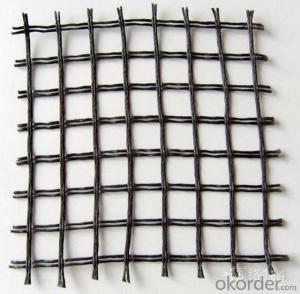Europe Geogrids Market PP Plastic Polypropylene Geogrid Biaxial for Civil Engineering Products
- Loading Port:
- China main port
- Payment Terms:
- TT OR LC
- Min Order Qty:
- 1000 m²
- Supply Capability:
- 10000000 m²/month
OKorder Service Pledge
OKorder Financial Service
You Might Also Like
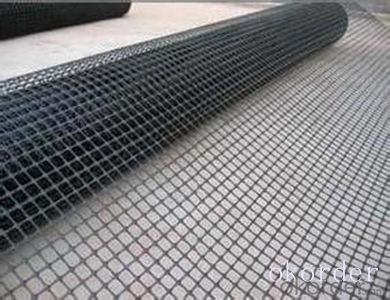
PP Plastic polypropylene geogrid biaxial
The properties of Biaxial Geogrids, made in Polypropylene (PP) with their square apertures, high tensile strength and optimised geometry of nodes and ribs make them equal to any other similar material.
Woven Geogrids are flat structures in the shape of a net made of high module synthetic fibres20X20,30X30,40X40,50X50,60X60,70X70,80X80,90X90,
100X100KN
PP geogrid
20X20,30X30,40X40,50X50,60X60,70X70,80X80,90X90,
100X100,110x110KN
Production function
1:Tensile strength, high creep degeneration small, it has good flexibility, low elongation at break, and effectively solved the engineering distortion and quite a shift, adapt to the environment soil, and can meet the retaining wall of high grade highway tall role.
2:Effectively improve the bearing the reinforcement embedded locks, bite role, great enhancement the bearing capacity of the foundation, effective constraint of soil lateral displacement, enhance the foundation stable performance.
3: Compared with the traditional grille has more strength, high bearing capacity is strong, prevent ageing, friction coefficient.
4: Effectively avoid in construction process by a few words of rolling, damage caused by the construction damage.
Our Service
Quality assurance
1.On a regular basis or as per your request,we entrust national testing agencies to conduct quality inspections
2. Strictly in accordance with the ISO9001-2008 international quality system standard,we monitor and manage the whole process throughout production,quality testing,and measurement to ensure product quality
3. For quality-related construction delay or substandard construction(except for damage or losses due to customer’s responsibility or irresistible natural disasters),we have refunding,replacement,and repair services.We will respond to customers’ feedbacks on quality issues within 24 hours.
Packaging & Shipping
Packing: PLASTIC FILM INSIDE, AND WOVEN BAG OUTSIDE
Shipping: About 15 days after receipt the deposit
FAQ:
Q: What kind of payments does jenor support?
A: T/T, L/C, Cash are accepted.
Q: Do you charge for the samples?
A: Accordeing to our company policy, the samples are free, we only charge the freight fee. And we will return the freight fee during the next order.
Q: Can you produce according to customers' design?
A: Sure, we are professional manufacturer, OEM and ODM are both welcome.
Q: Do you have other products?
A: Yes, please check the pictures:
- Q: Can geogrids be used in ground reinforcement for recreational facilities?
- Yes, geogrids can be used in ground reinforcement for recreational facilities. Geogrids are commonly used to stabilize and reinforce soil, making them ideal for applications such as sports fields, playgrounds, and other recreational areas. They help to prevent soil erosion, improve load-bearing capacity, and enhance the overall stability and durability of the ground.
- Q: How do geogrids improve the performance of flexible retaining walls?
- Geogrids improve the performance of flexible retaining walls by providing additional reinforcement and stability to the soil structure. They help distribute the lateral forces exerted on the wall, reducing potential wall deformation and preventing soil movements. Additionally, geogrids enhance the overall strength and load-bearing capacity of the wall, allowing it to withstand higher pressures and stresses.
- Q: How to choose 15kn bidirectional geogrid geogrid
- Two, the geogrid in the purchase price and the quality of geogrid, in addition to clear geogrid types and geogrid specifications, but also pay attention to the price of Geogrid and geogrid quality, the problem is most concerned with the purchaser
- Q: Are geogrids effective in stabilizing coastal dunes?
- Yes, geogrids are effective in stabilizing coastal dunes. Geogrids provide reinforcement and prevent erosion by acting as a support system for the sand particles. They help to maintain the shape and stability of coastal dunes, protecting them from wind and water forces.
- Q: Are geogrids resistant to chemical attack from soil contaminants?
- Yes, geogrids are generally resistant to chemical attack from soil contaminants.
- Q: What is the difference between geogrids and geotextiles?
- Geogrids are typically used for soil reinforcement and stabilization, providing structural support to prevent soil movement. On the other hand, geotextiles are used for filtration, drainage, and separation purposes, allowing water to pass through while preventing soil migration. Essentially, geogrids focus on reinforcement, while geotextiles focus on filtration and separation.
- Q: Can geogrids be used in retaining wall construction?
- Yes, geogrids can be used in retaining wall construction. Geogrids are commonly used as a reinforcement material in retaining walls to improve their stability and strength. They are designed to provide additional support and prevent the soil from sliding or eroding.
- Q: What are the differences between geogrids and geotubes?
- Geogrids and geotubes are both geosynthetic materials used in civil engineering and environmental applications, but they have distinct differences. Geogrids are typically made of polymer materials and are designed to provide soil reinforcement and stabilization. They have a grid-like structure with open spaces and are used to improve the strength and bearing capacity of soils. Geogrids are commonly used in road construction, retaining walls, and slope stabilization projects. On the other hand, geotubes are large, tubular containers made from high-strength woven or non-woven geotextile fabrics. They are used for shoreline protection, coastal erosion control, and dewatering applications. Geotubes are filled with sediment, sludge, or other materials and then dewatered, allowing water to escape while retaining the solid contents. They are often used in coastal engineering projects to create or restore beaches, control erosion, and contain contaminants. In summary, while geogrids are used for soil reinforcement and stabilization, geotubes are used for dewatering and containment purposes in coastal and environmental applications.
- Q: How do geogrids improve the performance of geocomposites?
- Geogrids improve the performance of geocomposites by adding tensile strength and stabilization to the overall structure. They enhance the load-bearing capacity and reduce deformation, effectively reinforcing the geocomposite system.
- Q: Can geogrids be used in soil reinforcement for landslide mitigation?
- Yes, geogrids can be used in soil reinforcement for landslide mitigation. Geogrids are commonly used to enhance the stability and strength of soil, including in slope stabilization and landslide prevention. They are placed within the soil mass to provide reinforcement and improve its load-bearing capacity, reducing the risk of landslides.
Send your message to us
Europe Geogrids Market PP Plastic Polypropylene Geogrid Biaxial for Civil Engineering Products
- Loading Port:
- China main port
- Payment Terms:
- TT OR LC
- Min Order Qty:
- 1000 m²
- Supply Capability:
- 10000000 m²/month
OKorder Service Pledge
OKorder Financial Service
Similar products
Hot products
Hot Searches
Related keywords
